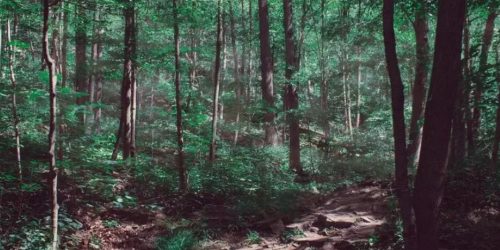If your answer is bigger than a couple of tennis courts, think again. Miniature forests are springing up on patches of land in urban areas around the world, often planted by local community groups using a method inspired by Japanese temples.
The idea is simple – take brownfield sites, plant them densely with a wide variety of native seedlings, and let them grow with minimal intervention. The result, according to the method’s proponents, is complex ecosystems perfectly suited to local conditions that improve biodiversity, grow quickly and absorb more CO2.
Have you read?
How forest loss has changed biodiversity across the globe over the last 150 years
These charts show what forest loss looks like across the globe
To save the planet’s trees, we should treat them like people
The Miyawaki method
The method is based on the work of Japanese botanist Akira Miyawaki. He found that protected areas around temples, shrines and cemeteries in Japan contained a huge variety of native vegetation that co-existed to produce resilient and diverse ecosystems. This contrasted with the conifer forests – non-indigenous trees grown for timber – that dominated the landscape.
What’s the World Economic Forum doing about deforestation?
His work developed into the Miyawaki method – an approach that prioritizes the natural development of forests using native species. Miyawaki forests can grow into mature ecosystems in just 20 years – astonishingly fast when compared to the 200 years it can take a forest to regenerate on its own. They act as oases for biodiversity, supporting up to 20 times as many species as non-native, managed forests.
Local pollinators such as butterflies and bees, beetles, snails and amphibians are among the animals that thrive with a greater diversity of food and shelter.
Greening urban spaces worldwide
The popularity of Miyawaki forests is growing, with initiatives in India, the Amazon, and Europe. Projects like Urban Forests in Belgium and France, and Tiny Forest in the Netherlands, are bringing together volunteers to transform small patches of wasteland.







